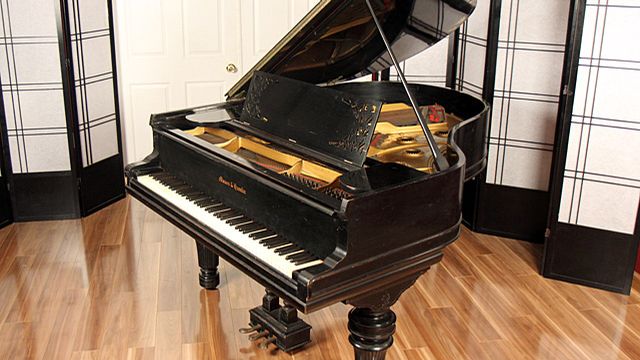


The involuntary bankrupt proceedings began in the summer of 1903 and was determined by the committee of creditors that a reorganization would be in the best interest of all concerned. What did the tuners of the time think of the screw-stringer system? For the most part, they hated it! First and foremost, it was a sight more difficult to replace a string, and restring the whole piano? Forget about it! Less frustrating was the different technique the tuner had to use when tuning the screw-stringer, but nevertheless, was another reason they opposed the system. So it was the economics of it, yes, but more to the point, it was a matter of life and death to the Mason & Hamlin Piano Co., for if they were to pursue it, they would have gone bankrupt! In other words, they gave it their all in pushing it onto the piano marketplace, endeavoring to make it popular, but it just didn't take. If we take a look at it from the historical perspective, we find that in 1903 Mason & Hamlin was in real danger of going out of business because of its pursuit and continued production of the screw-stringer system. I have wondered about it also, but there was a little more to the story as to why they discontinued the system. Others may say that they should have continued it anyway, because it was such a superior tuning system. Some may respond that it was too bad that they had to give in to the economics of it and discontinue its production. Well, the answer you will usually get is that it was just too expensive to continue, and in essence that is a true statement. In looking over the system, one may form the opinion that it is a decided improvement over the ancient tuning-pin-in-wood system. After all, it seems to be an extremely stable and well-designed one. Anyone who has tuned a screw-stringer Mason & Hamlin piano may have wondered why they abandoned the system.


 0 kommentar(er)
0 kommentar(er)
